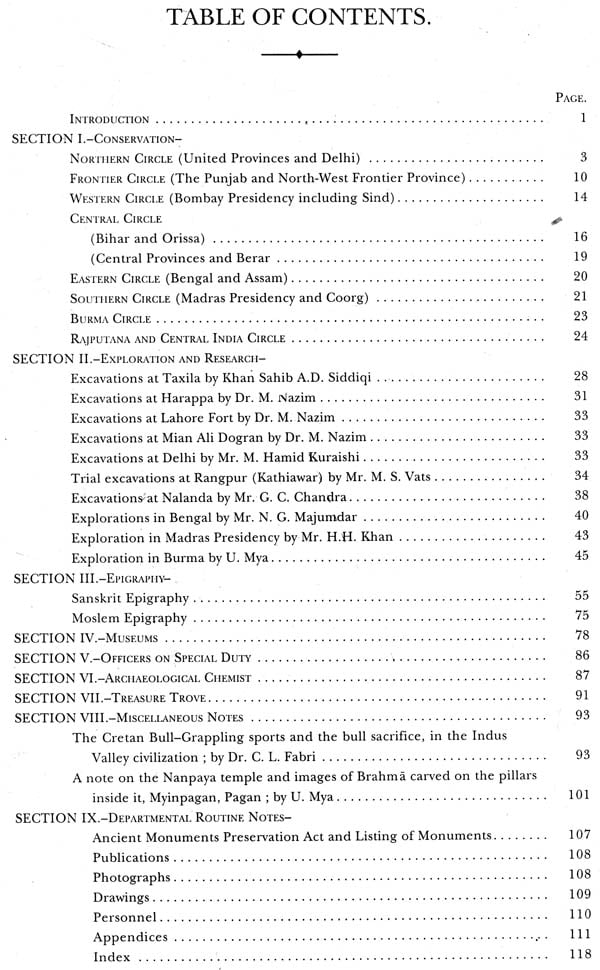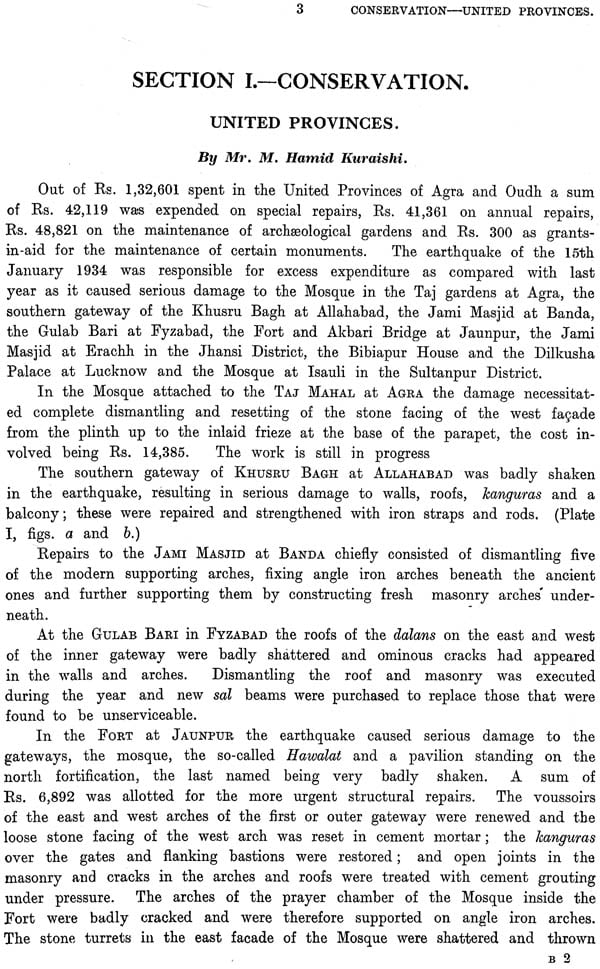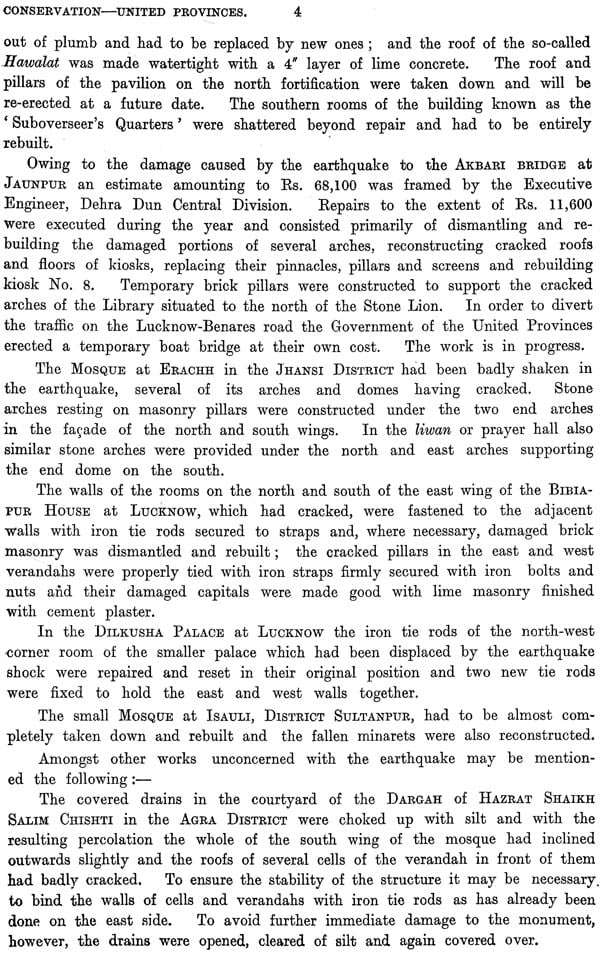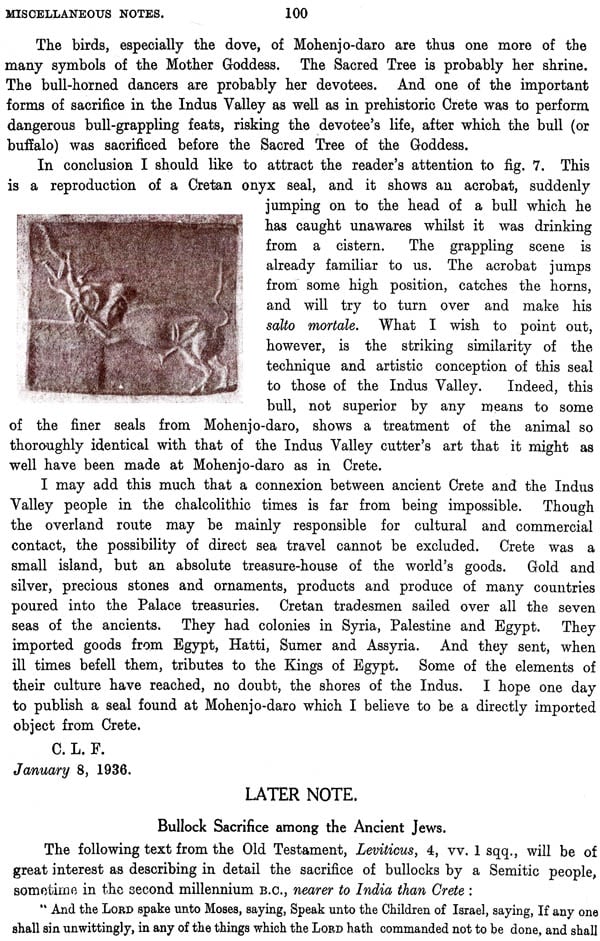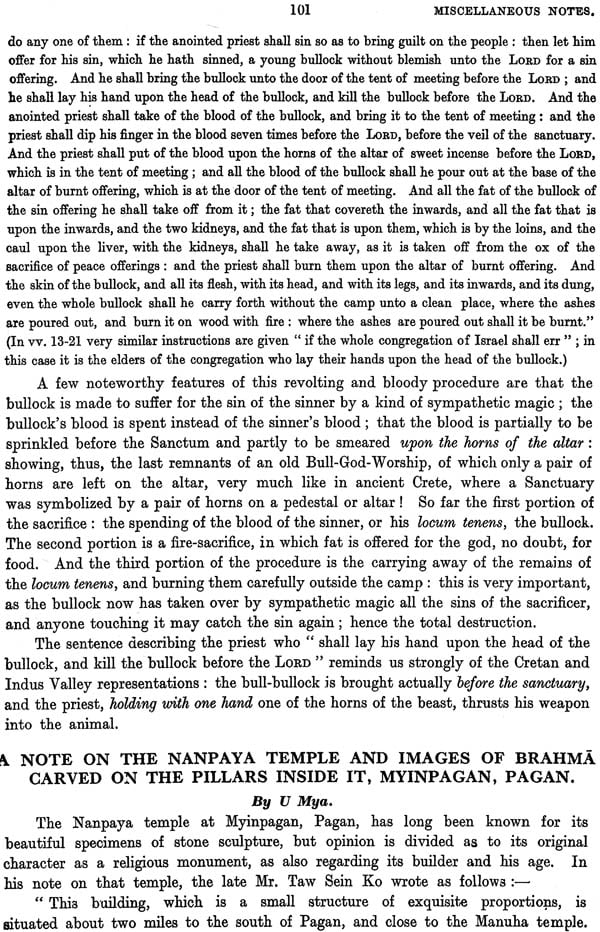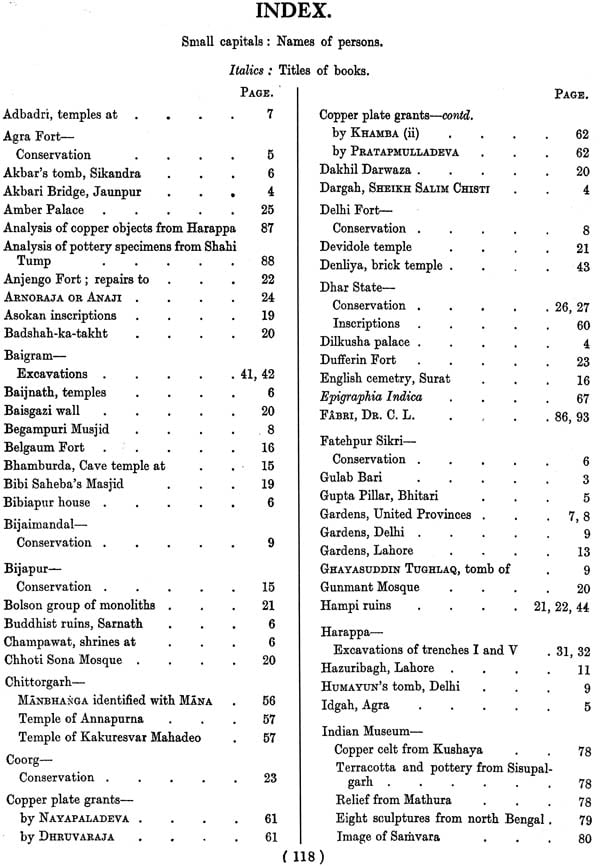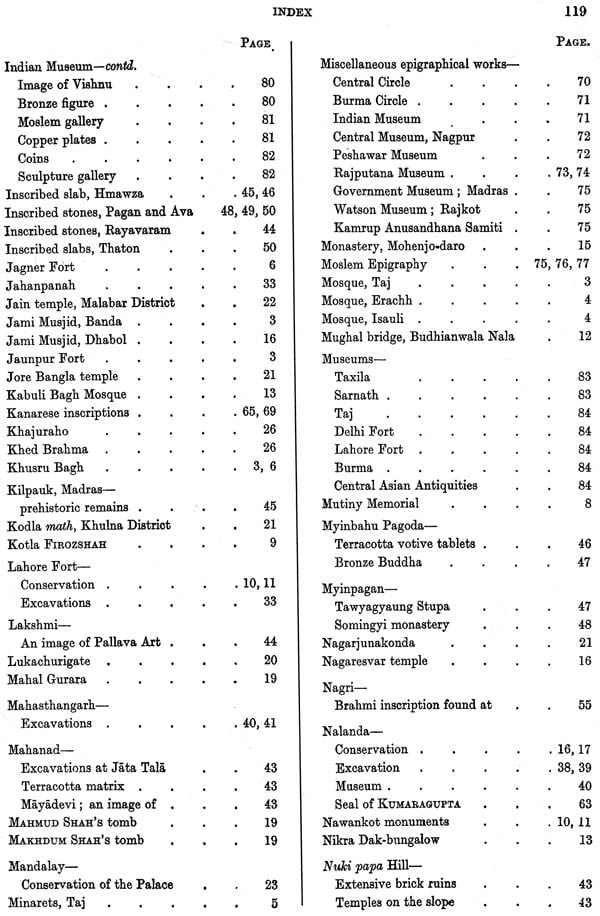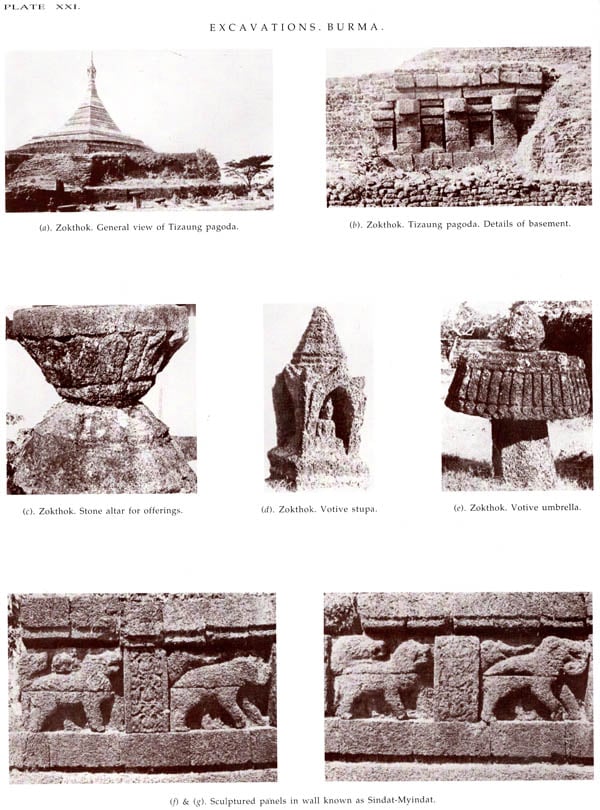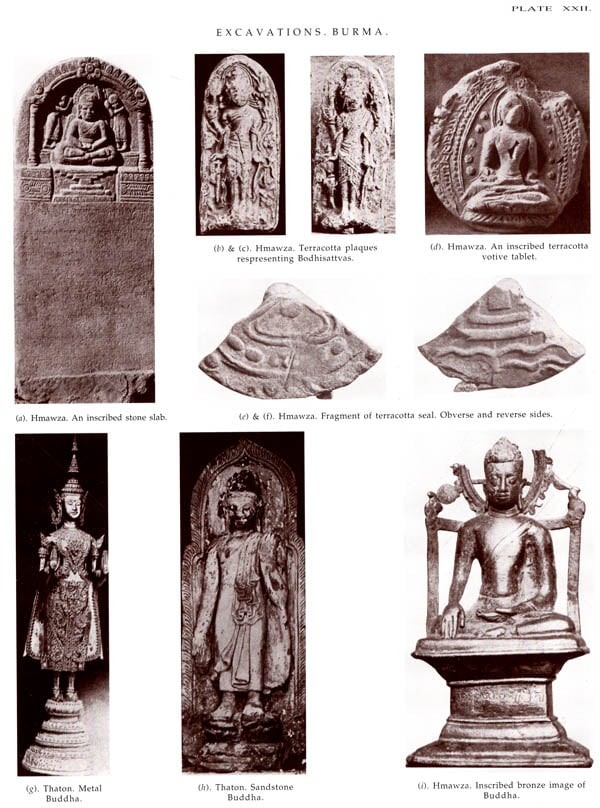
Annual Report of Archaeological Survey of India (1934-35)
Book Specification
| Item Code: | NAW447 |
| Author: | J. F. Blakiston |
| Publisher: | ARCHAEOLOGICAL SURVEY OF INDIA |
| Language: | English |
| Edition: | 2002 |
| Pages: | 154 (26 b/w Illustrations) |
| Cover: | HARDCOVER |
| Other Details | 11.00 X 9.00 inch |
| Weight | 920 gm |
Book Description
The attenuated appearance of this volume in strange contrast to its predecessors is perhaps the most eloquent commentary on the condition of the Department as it was left after the crippling blows received under the retrenchment axe. Thanks to the belated appearance of the last report which had to chronicle the activities of four years (including three of the post-retrenchment period), it did not suffer in comparison with the previous reports either in quantity or in the importance of the material. The present report covers the account of a single year, and reveals the unvarnished state of affairs, which can be attributed almost entirely to the effects of retrenchment. Owing to lack of funds for the main part and the depletion in the cadre of officers there has been a general decline in the activities of all branches of the Survey. which has now, perhaps, reached the rock bottom of its resources. Signs are not wanting, however, that the tide is definitely turning in favour of Archaeology, and it is hoped that the set-back received in 1931 will not continue much longer.
The year under report has not been entirely uneventful in the field of archaeology. The most important discovery was that of the existence of the Indus Valley culture so far southward as Kathiawar where Mr. M. 8. Vats, Superintendent, Archzological Survey, Western Circle, has brought to light at Rangpur, a village in Limbdi State, antiquities distinctive of the Indus Valley civilization. It is likely that when more funds for exploration are available the Upper Gangetic Valley will also yield distinct traces of the extension of the civilization associated with the Indus Valley. In the Epigraphical field the most interesting discovery of the year was that of a stone inscription in early Brahmi characters of the Ist or 2nd century B. C. found at Nagri near Chitore in the Udaipur State. In purport, it is identical with another inscription found at Ghosundi near Nagri some years ago, but the importance of the present find lies in its reference to the horse sacrifice, and the existence of worship of Vaishnavite deities at that early stage.
The main activity of the Department was in the field of conservation of ancient monuments but the meagre funds now available restricted any large special undertakings, unless they were of a very urgent nature. The special attention to the monuments in Bihar and its environs necessitated by the great earthquake of 15th January 1934 involved a serious shortage of funds in other provinces, for example, in Bombay where a large programme of work had to be cut short.
During this year the Government of India published in the Gazette draft rules under the amended Ancient Monuments Preservation Act, which lay down the conditions regulating the excavation of archeological sites by outside societies, both Indian and foreign. It is hoped that with the opening of the field to non-official effort great stimulus will be afforded to archeological research. During the year, negotiations have been in progress with Professor Norman Brown of the American School of Indic and Iranian Studies in connection with the grant of a licence to excavate a prehistoric site in the Indus Valley. It is hoped that other societies in India will follow the example of the American Society and organise properly conducted Expeditions under the guidance of experienced scholars. If the Universities and Historical Societies, working each in their respective local areas in which they are specially interested, organise such excavation parties, it should not be long before India reaches the standard of scholarship and achievement in regard to archeological matters approximating that in western countries. One thing seems to be certain, that the officers of the Archeological Department will not have the sole privilege of excavation and field research, but will co-operate with outside scholars and coordinate the efforts made by officials and non-officials to the great advancement of the cause of research.
**Contents and Sample Pages**
